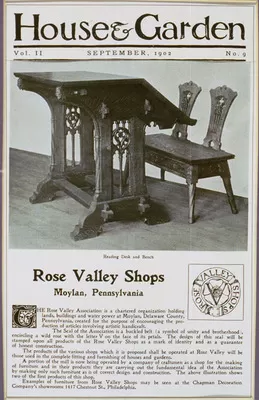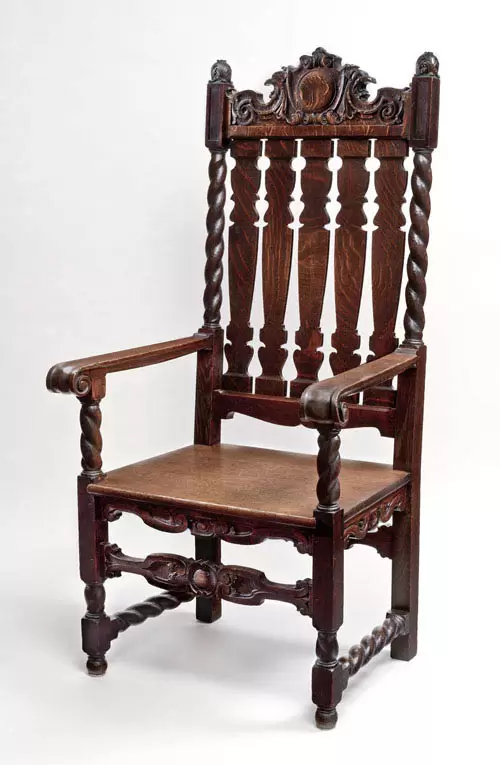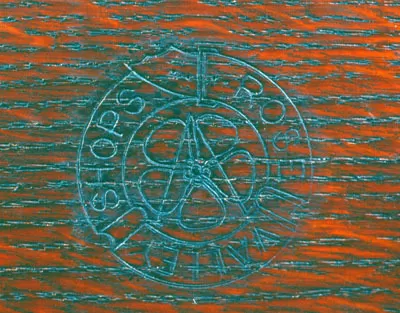The Rose Valley Community and its Arts & Crafts Furniture
by Mary Jane Penzo.
The history of Rose Valley as a continuing community — and the quality of its Gothic style furniture produced from 1901-1906 — make it an important American Arts & Crafts center, worthy of greater recognition than it has thus far received.

Founder Philadelphia architect William Lightfoot Price (1861-1916) designed modern mansions, hotels, and railroad stations. Also interested in social reform, he founded Rose Valley as a utopian Arts & Crafts community in 1901, based on the concept that William Morris envisioned in his utopian novel, News from Nowhere. Price considered it to be an experimental community where artists and craftsmen would live, work, and play. For a few years, a ceramics shop operated and a monthly periodical, The Artsman, was printed.

Rose Valley Shops began making furniture in 1901. Price believed that just as architecture was structural, furniture should be also. His model was Gothic carved furniture made in the middle ages with mortise and tenon joints, but the Rose Valley furniture he designed is distinctively his own. Rose Valley Shops made furniture mainly on commission. On request, styles other than Gothic were made, but only if the design did not violate Price’s structural principles. Although furniture production ceased in 1906 after fewer than 500 pieces were made during five years, Rose Valley remains today, a vibrant and bucolic residential community.

The Rose Valley Museum, with its collection of Rose Valley furniture, opened on October 28, 2017. Several major American art museums in New York City, Boston, Philadelphia, Virginia, Los Angles, as well as the Two Red Roses Foundation under construction in St. Petersburg, Florida, have at least one piece of Rose Valley furniture in their collections. In addition, a few Rose Valley residents also have additional pieces.

Mary Jane Penzo, a student in the Smithsonian – George Washington University Decorative Arts and Design History program, is currently writing her thesis on Rose Valley and its furniture. By documenting as many pieces of Rose Valley furniture as can be found, she will maintain that Rose Valley has an important place in the American Arts & Crafts movement. Mary Jane welcomes information about additional pieces of Rose Valley furniture.
If you have any information of examples of Rose Valley furniture, please contact Mary Jane at [email protected].
